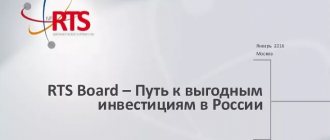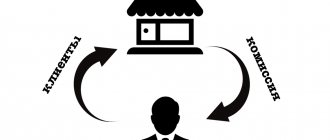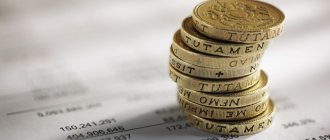olegas Feb 19, 2021 / 178 Views
If you work or plan to work in the future with such a financial instrument as bonds, then you simply need to know about such a concept as bond duration. In official sources, the term duration is explained in too abstruse terms with the use of such cumbersome formulas that you want to quickly close the page and forget about everything you saw on it (it was not enough for all this “heresy” to occur in a dream).
Meanwhile, to understand this term, you don’t need to delve into complex formulas or bother deciphering abstruse formulations. The fact is that you still won’t have to calculate the duration yourself in 100% of cases (many services on the Internet will do this for you, and, in the end, your broker). All you need is an understanding of what the resulting result affects and how to use it correctly. This is what we will talk about now.
Bond duration data presented on the website rusbonds.ru
What is duration in simple words
When purchasing a bond, an investor is forced to take on two main risks. The first is the risk of default of the issuer, the second is the interest rate. Its essence lies in the fact that the market price of a bond is sensitive to changes in the key interest rate in the economy. How this works - I wrote in an article about changes in the price of a bond.
Briefly: if interest rates rise, then the old fixed income bond becomes less interesting, so its price falls to attract new buyers. In other words, the yield of a fixed coupon bond rises if its price declines. And vice versa.
Moreover, the longer the maturity period, the more the bond price depends on interest rates. For example, there are 2 bonds with the same coupon (no matter what), but the maturity of one is 3 years, and the other is 5 years. The Central Bank's key rate increased by 2%. Consequently, bond yields should also rise. To “make up” the difference in yield to maturity, a 3-year bond loses 2*3 = 6% of the market price, and a 5-year bond loses 2*5 = 10%. Of course, the example is conditional, but the logic is clear.
Investors need to understand how they can protect themselves from future rate fluctuations. This is precisely why duration was invented. The duration of a coupon bond shows how the interest rate risks of different securities relate to each other. This is like the P/E ratio for stocks, by which you can compare different stocks and draw some conclusions.
Duration is one of the key indicators that professional investors look at, along with yield to maturity.
In simple terms, the duration of a bond is the time after which the owner of the bond will be able to return his investment back. Accordingly, it is measured in days. If the duration is 350, it means that the investor will be able to return his investment in a little less than a year, and then he will no longer be able to worry about rates and profitability, since he will get his due. If the duration is 1000, then you will have to wait almost 3 years to break even.
All other things being equal, a bond with a shorter duration is more attractive because it allows you to take on less risk.
So, you need to remember:
- the greater the duration value, the closer it is to the maturity date - therefore, the risks of investors in terms of changes in yield are higher;
- the shorter the duration, the shorter the payback period of the investment and the lower the risks.
Thus, the duration of a bond reflects the risk of changes in interest rates and serves as a kind of benchmark for understanding how resistant a bond is to storms in the market.
Using characteristics in investment projects
Duration of projects is the most correct way to make a choice between projects in which approximately the same level of profitability is expected. Using the universal coefficient, you can calculate the period after which the project will begin to make a profit. The calculation formula will be the same as when calculating according to the McCauley principle, with the same basic indicators - the amount of income and the period of its receipt. The advantage of using such a financial instrument is its high versatility: it will also help to evaluate credit transactions for the short and long term.
The McCauley calculation method is often used by financial organizations that evaluate the duration of assets and loan obligations in order to justify the risk of influence of the size of bank rates. If the duration of investments and credit operations are at approximately the same level, it means that the financial organization has a completely stable and stable position, and changes in rates will not harm it much.
Examples of using duration
Well, to make it clearer what it is - the duration of a bond, I will give a simple example.
Imagine that you are an investor and two entrepreneurs approach you. One is called Ivanov, the other is Petrov. Both want 1 million rubles at 10% per annum for one year. But at the same time, Ivanov will pay you interest every month, and will repay the entire debt at the end of the term. Petrov is not yet able to pay monthly, so he promises to return the money with interest in a year.
Here’s another interesting article: 10 tips for a novice investor
Who would you give the money to? Despite the fact that the financial result in both cases will be the same (you will get back 1 million rubles and 100 thousand in income), Ivanov’s option looks more attractive. You start making a profit on your investment immediately and can reinvest it.
In addition, the first option has lower risks. If both entrepreneurs go bankrupt in six months, then in the case of Ivanov you will get at least something.
Thus, in the first case the duration will be less, in the second it will be higher.
Another example of the use of bond duration. Both of our merchants paid off their debts successfully, but then came for more. They again need 1 million each with the same 10% per annum. Loan repayment – at the end of the term, they will pay interest monthly. But at the same time, Ivanov wants to return the money within 5 years, and Petrov – 10.
Who to give preference to? It seems that you will earn more with Petrov (he will pay interest for 10 years, not five!). But there are more risks here. Imagine that in 3 years there will be a strong surge in inflation and your money will depreciate. Moreover, as inflation rises, the key rate will also increase, and other investors will lend money at 20-30% per annum or even more. And your 10% per annum will not bring such profit. If you lent money to Ivanov, he would return it, and you would be able to lend it out at a higher interest rate.
Therefore, giving for a shorter period is less risky than giving for a longer period. And if your goal is to reduce risks, then it is better to lend to Ivanov for 5 years.
The duration in the case of Petrov will be 2 times higher than with Ivanov.
A little about banks and loans
By the way, the above examples fully explain why banks give loans and demand repayment of the debt with interest every month.
As you understand, this is one of the main ways to minimize the risks of non-return. Why give a loan with the condition of returning the full amount with interest at the end of the term? And wait several years, when you can immediately receive borrowed funds in installments.
The interest rate on loans issued works similarly. It varies for each client. Unreliable (from the bank's point of view) borrowers receive loans with higher interest rates. Compared to the solvent flow of regular customers.
The risk of non-return in the first case is much higher. And in order to approximately balance the risks of loans issued in both categories of borrowers, banks raise rates (reduce risks) for the unreliable category.
By converting to bonds, which are promissory notes or a loan that you give to the issuer issuing the paper, we get.
When the loan rate (coupon) increases, the bank’s risks and, accordingly, duration are reduced.
Formula for calculating duration
In order to calculate the duration of bonds, they use the formula of economist Frederick Macaulay. In 1938, he developed a special method that allows one to take into account the size and frequency of coupon payments when assessing interest rate risk. His main idea is that it is necessary to compare bonds of different duration and yield not by yield to maturity and not by final maturity, but by weighted average term.
In the Macaulay formula, each coupon is assigned a certain weight depending on the period of its payment: the earlier the payment, the more significant the weight. The sum of the weighted payments is then divided by the market price of the bond.
The bond duration formula itself looks something like this (taken from Wikipedia):
It’s complicated and confusing, and we don’t need to remember it. The main thing is to understand. To understand, let’s use a simplified formula for calculating duration.
It also looks rather complicated. You need to add up all the proceeds on the bond and multiply them by the time of receipt, and then divide the resulting result by the amount of proceeds. Now I’ll give an example, and it will become clear.
For example, there is a 1-year bond with a par value of 1000 rubles with a 10% coupon, which is paid at the end of the term. We add up the yield (coupon + face value) and multiply by the number of years: 1 * (1000 + 100) = 1100. Now divide by the amount of payments - 1100. We get 1 year. Duration is 1 year.
Let's try to find the duration of a bond in a more complex example. There is a bond with the same par value and the same maturity, but the coupon is paid once every six months - i.e. the investor receives two payments of 50 rubles.
And here’s another interesting article: “People’s” bonds will become even more popular
We add up the profitability (six months + year): 0.5 * 50 + 1 * 1050 = 1075. Divide by the total amount of payments - 1100 rubles. We get: 1075 / 1100 = 0.977.
Let's say that now the same bond pays a coupon once a quarter. We calculate the profitability (0.25 is the first quarter, 0.5 is the second, etc.): 0.25 * 25 + 0.5 * 25 + 0.75 * 25 + 1 * 1025 = 1062.5. Divide by profit: 1062.5 / 1100 = 0.965.
Thus, in the latter case, the duration will be less, therefore, there will be fewer risks. The complex formula ultimately leads us to the fact that a bond with a frequent coupon, all other things being equal, is less exposed to the risk of changes in rates.
In general, a simple formula can be used for preliminary calculations. However, we must not forget about inflation. 1000 rubles today is not 1000 rubles in 5 years. A complex formula takes into account the time factor and allows you to compare bonds of different durations with each other - due to the discounting effect I described above.
So, what is the main thing to take away from the duration formula:
- the longer the period remaining until maturity and the less often the coupon is paid, the higher the duration;
- the more often the coupon income is paid, the lower the duration value;
- for zero-coupon bonds (discount bonds) or bonds with one payment remaining, the duration will be equal to the term to maturity;
- Duration always turns out to be either less than the maturity date or equal to it.
Got it? Let's move on!
Definition
Duration is the weighted average duration of payments on an investment, where the weights are each payment valued at the prices of the day when the investment was made.
Now let's explain. The usual state of the monetary system is constant inflation, although preferably not high. But money is constantly getting cheaper. That is, with 10 percent inflation, 100 rubles today is not the same 100 rubles in a year. 100 rubles in a year at today's prices will be equal to 90 rubles. The valuation of money received on day T1 in prices of another day T2 is called the present value of money.
For an investor, this means that the higher the deferment of each next payment, the lower the price of this payment in prices of the day when the investment was made.
And also, the higher the inflation, the more subsequent (distant) payments depreciate.
These principles form the basis for calculating duration.
Where can I see the duration value?
There is no need to calculate the bond duration yourself. Not everyone is such a great mathematician, and there’s no point in that. Everything has already been calculated for us. If you trade through the QUIK terminal, then this information will be displayed there.
If you don’t have QUIK, but you want to buy bonds, you can find out the data on special portals. The most convenient option, in my opinion, is rusbonds.ru. There you can see the duration value in the bond card in the “Yield” tab.
Either in the main menu you can go to the “Bond Analysis” section and there you can find bonds that are suitable for their duration or sort them by their Macaulay duration value.
Bond convexity and how it affects price
If you graph the correlation between the price and yield of a bond, it becomes clear that it is always a convex function.
When forming a portfolio, preference should be given to securities with a greater degree of convexity. Such bonds are less dependent on market conditions and are better suited for asset diversification.
Examples of practical application
For example, I’ll take two completely real bonds MTS 001P-1 and VEB 1P-12. The first paper is issued by Vnesheconombank, the second by Vnesheconombank.
| Name | MTS 001P-1 | VEB 1P-12 |
| Maturity in years | 2,8 | 2,7 |
| Profitability, % per annum | 8,6 | 8,6 |
| Number of payments per year | 2 | 4 |
| Price in % of face value | 101,33 | 101,99 |
| Duration in years | 2,51 | 2,41 |
Since I expect that interest rates are planned to decrease in the future, my choice will fall on MTS bonds.
Where to buy paper
You can purchase debt instruments directly through the companies that issue them, but since the bonds are listed on the stock exchange, it is better to buy them through Russian brokers.
Best brokers
When choosing, you should look at brokers who are at the top of the rating. They will not differ much in commission costs from small financial companies, but in terms of service and technology they will give them a serious head start.
Reliable Russian brokers
| Name | Rating | pros | Minuses |
| Finam | 8/10 | The most reliable | Commissions |
| Opening | 7/10 | Low commissions | Imposing services |
| BKS | 7/10 | The most technologically advanced | Imposing services |
| Kit-Finance | 6.5/10 | Low commissions | Outdated software and user interface |
Modified duration
If you paid attention to the previous picture, you saw such an indicator as “modified duration”. If we have already learned what duration is and can determine its meaning, then what kind of beast is it?
The modified duration is calculated using a simple formula:
MD = D / (1 + YTM / n),
Where:
- MD is modified duration;
- D is the usual Macaulay duration in years;
- YTM – yield to maturity;
- n – number of coupons per year.
Let me explain with an example how to determine the duration of a bond. There is a bond Absolut Bank-6-S01-ob with the following parameters:
- duration – 769;
- yield to maturity – 14.35%;
- number of coupons – 2.
We substitute the values into the formula and get the modified duration: (769 / 365) / (1 + 0.1435 / 2) = 2.1 / 1.07175 = 1.95.
But in any case, it’s easier to take a ready-made option rather than calculate it yourself. On rusbonds.ru it is also shown in the bond card.
What is the mathematical meaning of modified duration? It shows how much a bond's value will change if the yield changes by 1% (or 100 basis points).
The dependence here is inverse and is calculated using the following formula:
P = – MD * y,
Where:
- P – change in bond value,
- y – change in profitability.
And here’s another interesting article: What is a structured bond, how and why should private investors buy it?
So, if the yield of our bond from the example increases from 14.5% to 16%, and its value changes like this: ?P = – 1.95 * 1.5% = – 2.925%.
This formula reflects the main dependence of bonds with a fixed coupon: if its yield rises, then the market value falls. And how strongly the change in yield and the market price correlates is shown by the modified duration.
Relationship between convexity and duration
If an investor graphically represents the yield from a bond, he will not get a straight line, but a convex curve, the bend or “convexity” of which depends on the yield of the security.
The concept of “convexity” is a financial term that characterizes the dependence of the value of a bond on its yield. “Convexity” is directly related to duration and reflects the property of its change - the greater the rate of change, the more the duration changes.
The convexity graph looks like this:
For an investor, the meaning of "convexity" indicates that the more convex a particular bond is, the faster the yield rises, but also the lower the value of the bond becomes.
How to Use Duration Value When Buying Bonds
The value of duration itself (both Macaulay and modified) is just a value. Like the stock's multiplier. He is neither bad nor good. An investor needs to be able to apply it and conduct analysis based on this data.
Thus, a bond with a longer duration has greater interest risks than a bond with a shorter duration. therefore, other things being equal, to reduce risks it is better to choose a bond with a lower duration. If your goal is to invest in securities with high income potential, then take bonds with a large duration.
Duration helps when you need to choose from similar securities. For example, there are 10-year OFZs with very different parameters: coupon yield and payment frequency, and there are also different market values. If you look only at the current profitability when choosing, you can get burned.
So, if the price of a bond relative to the par value is too high, then when the par value is redeemed, the overpayment will eat up the entire profit. If you had looked at the duration, you would have avoided this mistake.
What else you need to remember about duration:
- the lower the duration, the lower the interest rate risks, the lower the potential profitability of the security;
- the longer the duration, the more susceptible the bond is to changes in the key rate;
- if interest rates decline in the future, then you will receive more income from securities with a long duration (they will grow more);
- if rates are expected to rise (along with inflation), then it is better to prefer bonds with a short duration, since they are less susceptible to correction and will not fall in price as much;
- the duration value changes every day and especially strongly after the next coupon payment;
- modified duration is used to calculate the potential change in the value of a bond depending on the rise/fall of its yield.
I hope I brought clarity to what bond duration is and was able to explain quite complex things in simple terms. If not, write in the comments, I’ll try to answer. In fact, long-term investors who intend to hold bonds to maturity should look less at the duration value than at the yield to maturity. But if you plan to someday sell the securities included in your portfolio, it is simply necessary to pay attention to this indicator. Good luck, and may the money be with you!
Rate this article
[Total votes: 1 Average rating: 5]
Example of calculation in Excel
You can download the Excel file from this link. It shows the calculation of D. using a table. The parts of the formula for the columns of the table are presented as shown in the figure.
The calculation can be done as follows. Let's say we bought a bond for 1000 rubles at 10 percent (100 rubles) per year and expect its repayment in 10 years. The refinancing rate is also 10 percent.
This means that we put in column B, the coupon is 100. In column C, the rate is 0.1. In cell B13 - Year 10, write 1100 as the coupon plus the redemption payment. We get Duration equal to 6.76 years. For fun, you can see that in 6 years we will get back less than half of the invested funds. And also that at a rate equal to inflation, we will return exactly the amount that we invested. Naturally, in terms of the day the investment began. An example is highlighted in yellow in the table.
Risk criterion for investing in bonds
By investing in OFZs, the investor takes on certain risks. The degree of risk largely depends on the investment period. After all, the current conditional price will be “more expensive” than the same indicator in two or three years.
Possible risks:
- inflation, devaluation;
- political instability;
- rate fluctuations;
- market bubbles;
- financial crisis.
Discounting cash flow is proportional to the expected risks in a certain time period. Duration displays the time it takes to return an investment, taking into account the discount. The key rate of the Central Bank of Russia is taken as a basis.
Using a larger DO will increase the impact of interest rate fluctuations on discounting. As a result, the sensitivity of OFZ to changes in rates will increase.
Investors need to use the DR ratio to calculate risk. The rate affects the OFZ (KO) through its value. For example, if the coupon is not floating and is not tied to the key or reference rate (RUONIA). An increase in the rate usually leads to a decrease in the value of the instrument and an increase in profitability. Conversely, a decrease in the indicator leads to an increase in cost and a decrease in profitability. This risk parameter is called convexity.
The higher the DO, the more susceptible the security is to market fluctuations. The higher its sensitivity, the more the value of the instrument changes. For example, if the duration is two years, and the rate increased by 1%, the price of OFZ (KO) will fall by 2%.
Why is it needed and where is it used?
So, the duration of a bond is the payback period for investments in a security. For a zero coupon bond, this value is equal to the life of the debt obligation. We will consider in detail the duration of a coupon bond and first give the basic definitions that we will need.
A bond is a debt obligation of the state or company, under which the issuer (borrower) undertakes to return to the acquirer (lender) the face value of the security plus interest (coupon) within a certain period.
A coupon is the reward on a bond, expressed as a percentage of its face value.
Accumulated coupon income (ACI) is the sum of all coupon payments. Such payments can be made at different intervals:
- annually;
- semiannually;
- quarterly.
The more often payments are made, the more complex the calculation of duration.
The discount rate is a percentage of the expected future profit.
In addition to bonds, duration is also used to calculate the payback period of portfolios, loans and other debt obligations, and investment projects. Using this indicator, you can calculate the repayment period of the debt by the creditor.
Where to buy paper
You can buy bonds using the services of brokers or through a management company. The brokerage company will create a personal account for you and help you with installing the program and choosing paper. Apart from the commission, you will not have to pay anything else. And if you want to resell the bonds after some time, then the commission will be minimal.
If you have no desire to deal with the applications, then I advise you to contact the Criminal Code. You purchase part of a portfolio of securities of some companies, and the manager monitors all changes. The commissions here are much higher than at a brokerage agency.
Best brokers
You need to take the choice of a broker seriously, so below I attach a comparative table of the best brokerage companies:
Rick Keith Opening CapTrader Exante
The oldest Russian broker, operating since 1994. An excellent choice for those who want to connect to autofollow. Pros:
- no annoying calls with offers to spend money;
- own trading platform;
- impressive results of strategies (+74% for 2021) that you can connect to.
Of the minuses:
- no Quik.
You can read the full review here.
A good broker for a beginner. Here I hold the Russian part of the investment portfolio from an ETF from FinEx on an IIS.
The broker pleases:
- low commissions and the absence of annoying calls with offers to spend my money.
Of the minuses:
- weak personal account and inconvenient system for annual key regeneration.
The review can be read here.
Another great broker with whom I worked for more than 2 years. This is where I traded on FORTS.
Pros:
- Reasonable commissions
- Excellent personal account
- Nice free services
The downside is the broker's love of calling people trying to sell something.
The review can be viewed here.
German IB introducing broker for direct access to foreign markets. This is where my investment portfolio is located.
Pros:
- Works with Russians
- Availability of a Russian-language version of the site
- Reasonable commissions
- No inactivity fee
- Insurance under US law for $500k
The disadvantages include:
- Support exclusively in English and German
- The support service itself is poor
For a detailed review, see this post.
Another interesting broker for going abroad, and not from the IB family. Unfortunately, contracts are opened for Russians only in Cyprus.
Pros:
- Acceptable commissions
- The fact of successful verification of work by the SEC
- Russian-language website and support
On the downside:
- Cyprus jurisdiction
- Inactivity fee
Read a detailed review here. You can get a $500 bonus when opening an account here.











